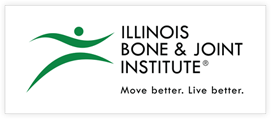Glenohumeral Resurfacing
The glenohumeral joint is the ball and socket shoulder joint. It connects the arms to the body. The ball is the head of the upper arm bone (the humerus), and the socket is the glenoid cavity on the shoulder blade (the scapula).
Osteoarthritis of the shoulder joint is a progressive loss of articular cartilage which eventually leads to erosion of the underlying bone. It is a common source of pain and disability that decreases quality of life and psychological well-being. Studies report that arthritis of the shoulder joint leads to depression and anxiety.
For young patients with severe arthritis, various surgical procedures may be considered including a partial shoulder replacement or a total shoulder replacement. However, these options are not optimal for the young and active patient because the implants have a life span of 15-20 year and the risk of hardware loosening from increased functional demands leads to early failure.
Humeral head resurfacing of the glenoid with less invasive humeral head replacement can provide significant improvement in pain and mobility. The objective of this procedure is to maintain more natural anatomy and bone. With the potential for greater longevity and preservation of anatomy, glenohumeral resurfacing for end-stage shoulder arthritis is an important treatment option to consider before total shoulder arthroplasty.
- Trauma to the shoulder from an accident or sports injury, including a dislocated shoulder.
- Overuse from work or sports
Dr. Patel will take a thorough history including symptoms and perform an orthopaedic examination focused on range of motion, rotator cuff strength, and nerve function. Because symptoms of arthritis are similar rotator cuff damage, a torn labrum, and trauma, he will need to make a differential diagnosis to rule out other causes of symptoms. Often early arthritis is diagnosed during shoulder arthroscopy for one of these other conditions. He will order x-rays and advanced imaging to evaluate the joint.
Conservative management is the first option, including oral and topical anti-inflammatory medications, physical therapy and intraarticular injections of steroids, hyaluronic acid, and platelet rich plasma. However, these options typically only provide short term relief.
Surgery is based on the patient’s age and functional requirements. Debridement is a procedure performed with arthroscopy for early-stage arthritis. It involves the removal of loose bodies of cartilage and bone spurs to relieve symptoms. Glenohumeral resurfacing is a bone preserving technique that can offer symptom relief and restoration of function.
Glenohumeral resurfacing is a technique used to treat shoulder pain and instability. The procedure involves removing the damaged cartilage from the head of the upper arm bone and replacing it with a metal cap and includes resurfacing the glenoid with plastic inlay insert that does not remove a significant amount of bone. This helps to restore normal function of the shoulder joint and relieve pain.
Glenohumeral resurfacing is often performed in patients who have shoulder pain and instability that has not responded to conservative treatment measures such as physical therapy and medications. This procedure can also be an option for patients who are not candidates for other types of shoulder surgery, such as shoulder replacement.
The advantages of glenohumeral resurfacing include:
- restores functional range of motion
- restores normal anatomy
- less traumatic surgery
- quicker recovery
- bone preservation, and
- implant design reduces the risk of loosening and reserves the use of a total shoulder replacement in the future.
Glenohumeral resurfacing is an alternative to total shoulder replacement for patients with higher levels of activity. This procedure was initially invented/performed at the Cleveland Clinic where Dr. Patel helped perform the procedure as well as research on its efficacy.
When you or a loved one receives a diagnosis of arthritis of the shoulder joint, contact Dr. Ronak M. Patel to learn about your treatment options. Dr. Patel is a double board-certified orthopaedic surgeon and sports medicine physician trained at Northwestern University and received a fellowship at the Cleveland Clinic. He specializes in the treatment of all knee, shoulder and elbow injuries and degenerative conditions. Contact him to schedule a consultation to learn more about how he can help you return to the life you love and the activities that make life worth living. He serves teens and adults in Chicagoland and NW Indiana.
At a Glance
Ronak M. Patel M.D.
- Double Board-Certified, Fellowship-Trained Orthopaedic Surgeon
- Past Team Physician to the Cavaliers (NBA), Browns (NFL) and Guardians (MLB)
- Published over 49 publications and 10 book chapters
- Learn more

